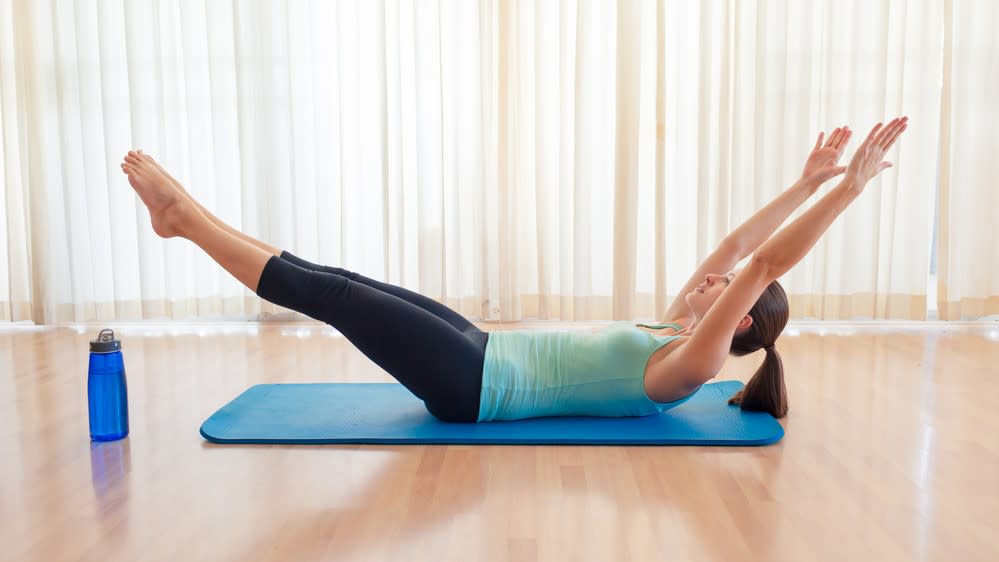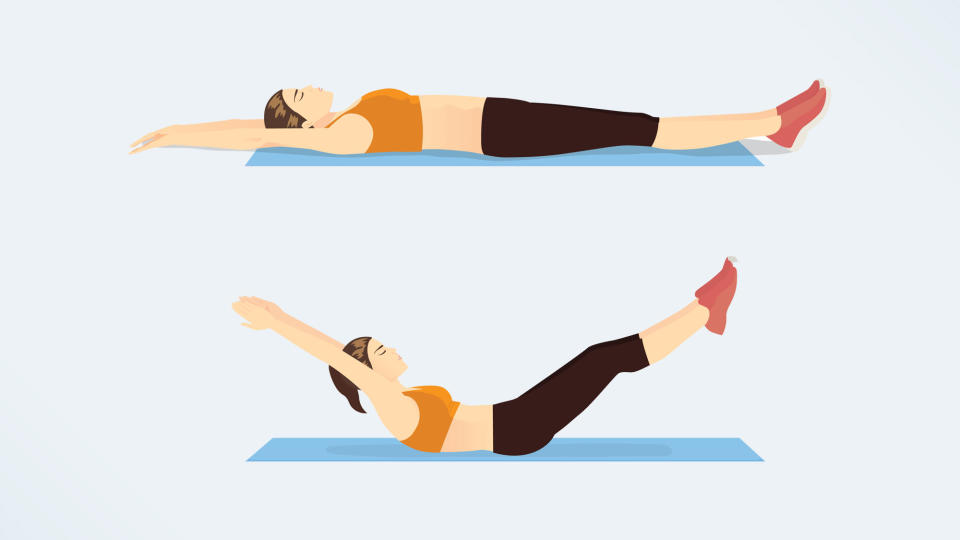I'm a personal trainer — this bodyweight ab exercise builds a solid core without weights

Strengthen your core, hips, quads and back using this abs exercise to build full-body strength, endurance and stamina.
The hollow hold is an isometric exercise, which means your muscles contract without lengthening or shortening — in other words, you won’t move. To do it, extend your arms behind you, lift your upper back and legs away from the ground, point your toes and create a soft C-shape with your body. Contracting as many muscles as possible, hold the position.
Sounds easy, right? I dare anyone to perform the hollow hold core exercise without trembling within the first 10 seconds. If you fancy giving it a try, I cover how to do hollow holds with proper form, the benefits, ways to scale the exercise and why I love programming this move for clients.
How to do a hollow hold

Lie on your back on one of the best yoga mats
Extend your legs, press them together, then stretch your arms overhead, hugging your biceps toward your ears
Brace your stomach and gently tuck your pelvis toward you to flatten your lower back onto the mat
Lift your head, upper back, arms and legs away from the ground, tucking your chin toward your chest
Point your toes, creating a soft C-shape through your body
Hold the position
To progress the exercise, turn your hollow hold into a hollow rock by gently rocking forward and backward. Keep your body tightly contracted without swinging the shoulders or hips — your body should move as one solid unit.

Gaiam yoga mat: now $29 @ Amazon
Don't want to spend a fortune on your next exercise mat? Grab the popular Gaiam mat, perfect for yoga and other exercise, at just $29.View Deal
What are hollow rocks good for?
Although the hollow hold and hollow rock are slightly different exercises, they target the same muscle groups. The difference is the hollow hold taps more into balance and stabilization while practicing isometric contraction, whereas hollow rocks require movement, known as isotonic contraction; isotonic and isometric contraction are both fundamental for stimulating muscles during exercise.
During the exercise, you’ll target the transverse abdominis (deep core muscles), rectus abdominis (“six-pack muscles”), erector spinae (muscles that hug the spine), obliques (muscles that run down your waist) hip flexors, quads, inner thighs (adductors), trapezius (located in your back), shoulders and arms.
Hollow rock and hollow hold exercises can be used interchangeably in abs workouts. For many people, hollow rocks are harder on balance and coordination, but the art of holding a contraction can feel very tough for most.
Both are used in functional workouts like CrossFit to build foundational strength, stamina, mobility and endurance for bar-based gymnastics exercises like beat kipping, kipping pull-ups, butterfly pull-ups, toes to bar, or muscle-ups — all CrossFit staples.
The exercise mimics how your body should be positioned under the bar while moving backward and forward. Hollow rocks and holds also help you develop the strength to hold and control your body in this position under the bar, transferring your weight under full muscular control.
During hollow holds, major muscle groups and smaller stabilizer muscles are working to help you maintain the position. Learning to engage your core this way while keeping your spine neutral can also transfer to other compound exercises like squats or deadlifts. To progress the exercise further, hold a weight like an adjustable dumbbell or plate in both hands.
Hollow hold: Common mistakes
Whether you choose hollow holds, hollow rocks, or both, there are a few ways to avoid common pitfalls associated with the core exercise. Keep your chin tucked toward your chest to help neutralize the spine, and brace your torso, so it’s as solid as possible.
Remember that your lower back should always be in contact with the mat beneath you, even as you rock forward and backward. Pressing your lower back down will help you maintain the position. Try not to sit up too far or lift your arms or legs too high; you’ll feel more tension building in your abs if you keep your arms and legs closer to the ground.
Finally, start slow and controlled with the rocking motion during hollow rocks without swinging yourself back and forth. The aim is to build core control and functional core strength and improve your mind-muscle connection, strengthening how your brain and muscles communicate.
I recommend starting with the hollow hold, and adding the hollow rock when you feel comfortable. Start by holding for 20 seconds and build slowly. I program the exercise during mobilization drills or abs workouts, asking clients to hold or rock for a set amount of time, rest, rinse and repeat.
If you plan to try it and can maintain the position for over 20 seconds, try 3-4 rounds of 45 seconds on and 15 seconds off, either holding, rocking, or both.

